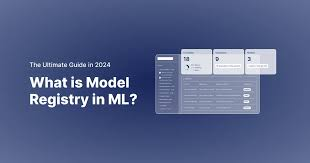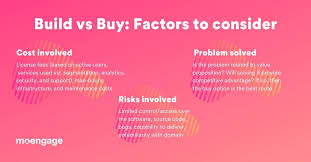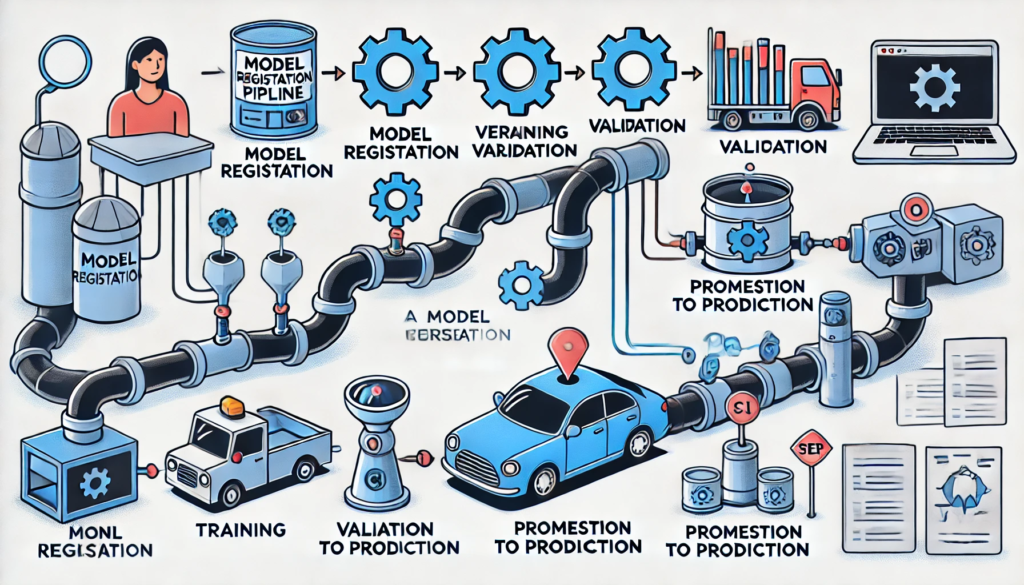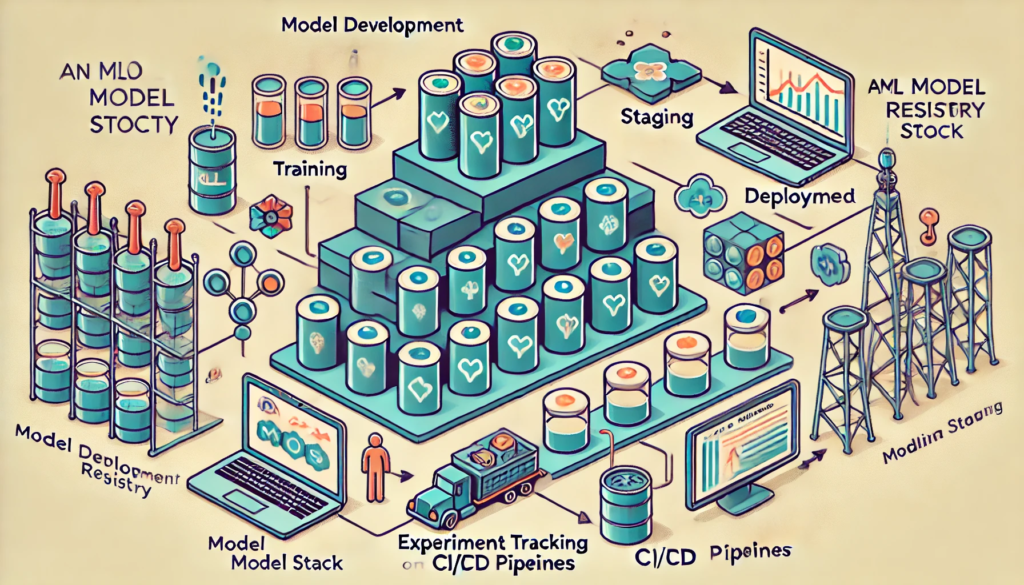comprehensive guide to Setting Up an ML Model Registry: Build, Maintain, or Buy? 2024
As machine learning (ML) projects scale, managing models across their lifecycle—from development to deployment—becomes increasingly complex. A Model Registry offers a centralized system to track, manage, and govern machine learning models. However, setting up a model registry requires organizations to make a critical decision: build, maintain, or buy.
This blog explores the role of model registries in MLOps workflows, their implementation levels, and the pros and cons of building, maintaining, or purchasing a solution.
Where Does a Model Registry Fit in the MLOps Stack?

A model registry acts as the bridge between machine learning development and deployment. It integrates seamlessly with pipelines, enabling:
- Tracking: Metadata about models, including versions and metrics.
- Validation: Staging models for testing and quality assurance.
- Deployment: Promoting models to production environments.
Key MLOps Levels
- Level 0 (Manual Workflows):
- Models and metadata are manually registered.
- Data scientists package models using tools like serialization or containerization.
- Operations teams validate and deploy models manually.
- Level 1 (Automated Training Pipelines):
- Continuous training pipelines deliver trained models and metadata directly to the registry.
- Models are validated automatically before deployment.
- Level 2 (Fully Automated Pipelines):
- Event-driven systems promote models to production based on performance metrics.
- Supports archiving outdated models and integrating QA triggers.
Implementation Options: Build, Maintain, or Buy?

1. Building a Model Registry
What It Involves:
- Designing and developing a custom solution tailored to your organization’s needs.
- Key components include:
- Object Storage: For models and artifacts.
- Database: For metadata logging.
- APIs: For integration with pipelines and environments.
- UI: For model visualization and interactions.
Considerations:
- Incentive: Are you building for customization or proprietary control?
- Resources: Do you have skilled personnel to develop and maintain it?
- Timeline: How long will it take to build, and is it worth the wait?
- Cost: What are the upfront and operational costs?
Pros:
- Full customization to meet unique requirements.
- Ownership of proprietary licenses.
Cons:
- High development and maintenance costs.
- Time-intensive to build and deploy.
2. Maintaining an Existing Solution
What It Involves:
- Adopting an open-source or pre-built registry while managing certain components, like storage and database systems.
Factors to Consider:
- Type of Solution: Open-source vs. closed-source options.
- Operations: Who will maintain and update the registry?
- Features: What capabilities exist, and what must be built or customized?
- Support: Availability of community or vendor support.
- Accessibility: Ease of setup, usability, and documentation.
Pros:
- Cost-effective compared to building from scratch.
- Leverages community-driven innovation and updates.
Cons:
- Limited by the features of the base solution.
- May require significant integration work.
3. Buying a Fully Managed Solution
What It Involves:
- Subscribing to a managed service where the vendor handles operations, updates, and maintenance.
Factors to Consider:
- Industry Fit: Does the solution comply with industry standards (e.g., on-premise for sensitive data)?
- Features: Are the offered features aligned with your workflows?
- Cost: Do the benefits justify the licensing costs?
- Performance: Can the registry handle large-scale models efficiently?
- Support: Availability of vendor support for troubleshooting.
Pros:
- Minimal operational overhead.
- Scalable and enterprise-ready.
- Quick deployment with minimal setup.
Cons:
- Licensing costs can be high.
- Limited customization compared to in-house solutions.
Popular Model Registry Solutions

- MLflow Model Registry:
- Features include model versioning, lifecycle management, and CI/CD integration.
- Ideal for teams adopting open-source MLOps workflows.
- Amazon SageMaker Model Registry:
- Built for enterprise-scale ML workflows with robust AWS integration.
- Includes features like versioning, deployment, and monitoring.
- Neptune.ai:
- Combines experiment tracking and model registry in a single platform.
- Cloud-based with an intuitive dashboard for collaboration.
Best Practices for Setting Up a Model Registry

- Define Objectives:
- Clearly outline your goals: compliance, scalability, or collaboration.
- Automate Registration:
- Use pipelines to log models and metadata automatically.
- Integrate with MLOps Workflows:
- Ensure seamless connections with CI/CD tools and deployment systems.
- Monitor Performance:
- Continuously track metrics and identify drift or degradation in production.
- Prioritize Security:
- Protect sensitive metadata and ensure compliance with data regulations.
Conclusion
A well-implemented model registry is a cornerstone of scalable, reproducible, and efficient machine learning workflows. Whether you choose to build, maintain, or buy, the right decision depends on your organization’s size, expertise, and goals. By centralizing model management, a model registry ensures that every model is traceable, deployable, and optimized for performance.
Ready to streamline your ML lifecycle? Start exploring model registry options today!